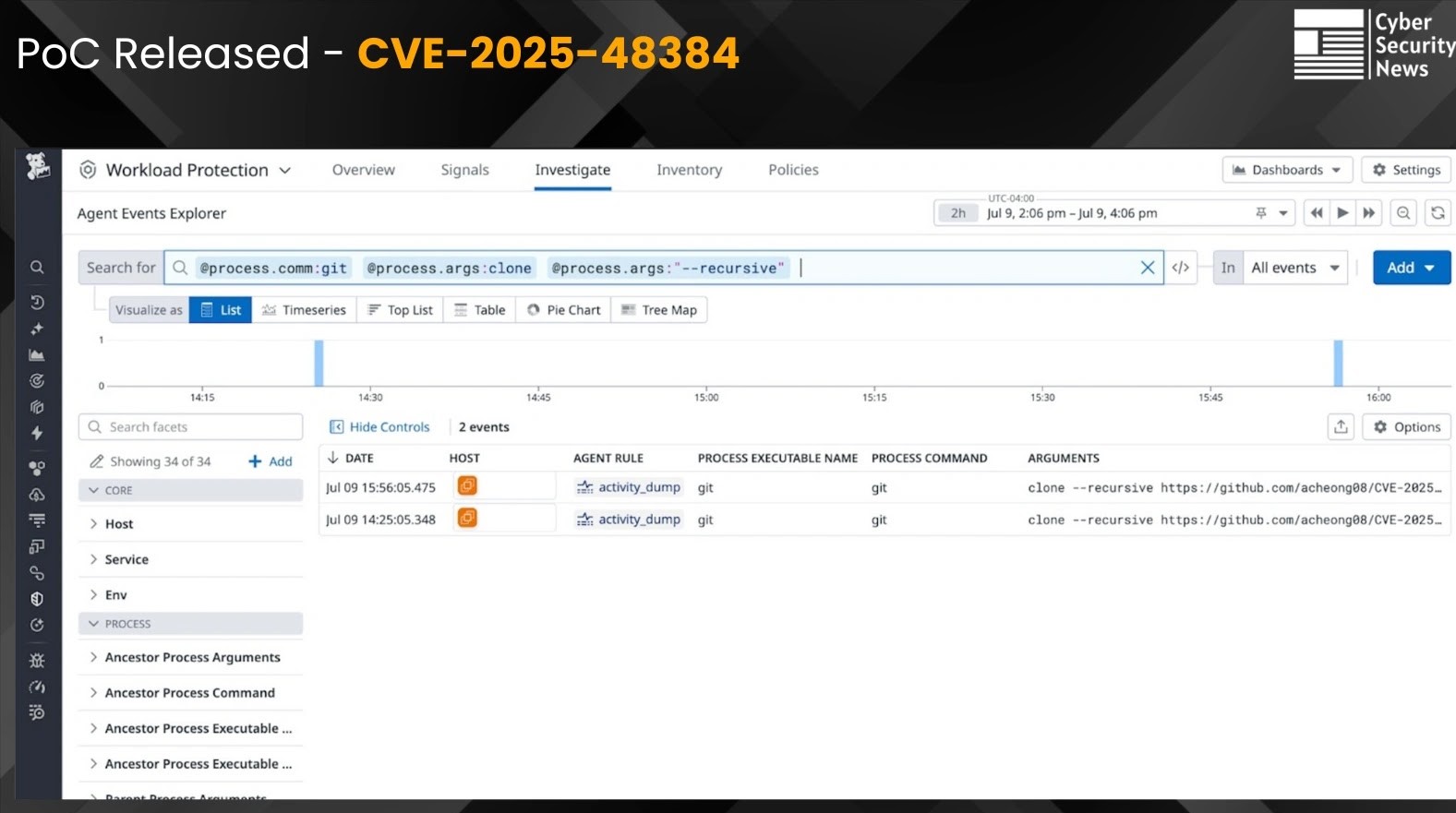
PoC Exploit Released for High-Severity Git CLI Arbitrary File Write Vulnerability
The rapid pace of software development relies heavily on version control systems, and Git stands as an undisputed leader. However, its pervasive use also makes it a prime target for adversaries. A critical vulnerability, CVE-2025-48384, has just been exposed, posing a significant risk to developers and organizations utilizing Git on Linux and macOS systems. With working Proof-of-Concept (PoC) exploits now publicly available, the urgency to address this threat cannot be overstated.
Understanding CVE-2025-48384: The Arbitrary File Write Threat
This high-severity vulnerability, assigned a CVSS score of 8.1/10, enables an arbitrary file write through the Git Command Line Interface (CLI). In practical terms, this means that an attacker can trick a user into executing specific Git commands, leading to the creation or modification of files on their system in locations they should not have access to. The most alarming vector for exploitation involves maliciously crafted repositories.
The core of the issue lies in how Git handles certain repository structures or operations. When a user executes a command such as git clone --recursive on a repository controlled by an attacker, the arbitrary file write can be triggered. This allows the attacker to plant malicious files or overwrite critical system files, even with standard user privileges, setting the stage for more severe compromises.
The Path to Remote Code Execution (RCE)
While an arbitrary file write on its own is serious, its real danger manifests when chained with other vulnerabilities or misconfigurations. For skilled attackers, an arbitrary file write is often the crucial stepping stone toward achieving Remote Code Execution (RCE). By writing executable files to specific system paths (e.g., cron jobs, startup scripts, or web server configurations) or by modifying existing configuration files to point to attacker-controlled code, they can execute arbitrary commands on the victim’s machine. This escalates the attack from mere data alteration to full system compromise, granting adversaries control over compromised systems and access to sensitive data.
Why Public PoC Exploits Matter
The release of public PoC exploits significantly increases the threat landscape. Before public PoCs, exploitation might be limited to highly skilled threat actors with the resources to research and develop custom exploits. Once a PoC becomes public, it lowers the barrier to entry, enabling a broader range of malicious actors, including less sophisticated ones, to weaponize the vulnerability. This accelerates the likelihood of widespread attacks and underscores the immediate need for defensive measures.
Affected Systems and Key Takeaways
This vulnerability specifically impacts users running Git CLI on Linux and macOS systems. Windows systems are not currently reported as being directly affected by this specific arbitrary file write vulnerability within Git CLI itself. However, organizations should always maintain a holistic security posture across all platforms.
Key takeaways from this disclosure include:
- CVE-2025-48384 (CVSS 8.1/10) allows arbitrary file writes via Git CLI.
- Exploitation occurs when users clone maliciously crafted repositories using
git clone --recursive. - Proof-of-Concept exploits are publicly available, increasing immediate risk.
- The vulnerability affects Git CLI on Linux and macOS systems.
- Arbitrary file write can lead to Remote Code Execution (RCE).
Remediation Actions and Best Practices
Addressing CVE-2025-48384 requires immediate action. Adhering to robust security practices is critical for preventing exploitation:
- Update Git CLI Immediately: The most crucial step is to update your Git CLI installation to the latest patched version as soon as it becomes available. Monitor official Git project announcements for security updates.
- Exercise Caution with Repositories: Avoid cloning repositories from unknown or untrusted sources, especially using the
--recursiveflag. Verify the legitimacy of the repository and its maintainers before cloning. - Educate Developers: Train development teams on the risks associated with cloning untrusted repositories and the implications of using various Git commands.
- Implement Least Privilege: Ensure that developers and build systems operate with the principle of least privilege, limiting their ability to write to sensitive system directories.
- Monitor System Logs: Implement robust logging and monitoring for suspicious activity, particularly file system writes to unusual locations or execution of unknown processes.
- Regular Security Audits: Conduct periodic security audits of your Git usage, CI/CD pipelines, and development environments to identify and mitigate potential weak points.
Relevant Security Tools
Leveraging security tools can aid in detection, scanning, and mitigation efforts against vulnerabilities like this.
| Tool Name | Purpose | Link |
|---|---|---|
| Git-Updater Scripts | Automates Git CLI updates. | (Varies by OS/distro, consult official docs) |
| Static Application Security Testing (SAST) | Analyzes source code for vulnerabilities (for your own projects). | OWASP SAST Tools |
| Endpoint Detection and Response (EDR) | Monitors endpoints for suspicious activity and active threats. | (Commercial solutions like CrowdStrike, SentinelOne, etc.) |
| File Integrity Monitoring (FIM) | Detects unauthorized changes to critical system files. | OSSEC |
Conclusion
The immediate availability of a PoC exploit for CVE-2025-48384 marks a critical moment for cybersecurity teams. This arbitrary file write vulnerability in Git CLI, particularly impacting Linux and macOS, serves as a stark reminder of the continuous need for vigilance in open-source software supply chains. Prioritize patching, enforce strong security hygiene, and educate your development teams to safeguard against potential RCE and other malicious activities. Stay informed through official security advisories and act decisively to protect your development environments.





